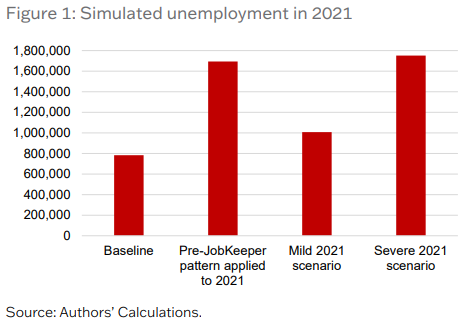
COVID modelling reveals huge housing vulnerabilities in 2021
New research examines the likely impacts on individuals, and their households, of lost employment and income due to COVID-19
30 Nov 2020
With modelling suggesting that between 1,008,000 and 1,752,000 people will be unemployed in 2021 due to the COVID-19 pandemic, the number of households living in a precarious situation will likely remain high even after any partial recovery in 2021, new AHURI research has revealed.
We found that without an extension of the JobKeeper income support measures beyond March 2021, the number of households living in HAS is likely to increase significantly, said lead author of the research, Professor Chris Leishman from the University of Adelaide.
The research, ‘Supporting Australia’s housing system: modelling pandemic policy responses’, has modelled a range of economic outcomes for employment and housing of specific groups of home owners, private renters, and small investor landlords from late 2020 and through 2021.

The research established that once the pandemic and its economic repercussions began the number of lower-income households living with housing affordability stress (HAS)—where they pay more than 30 per cent of their income in housing costs—would have risen from the 758,000 households already in HAS to an estimated 1,336,000 if it hadn’t been for the JobKeeper and JobSeeker interventions. Instead, the JobKeeper and JobSeeker interventions meant a smaller number of households (861,500 in total) experienced HAS.
The COVID-19 pandemic has had a disproportionate impact on younger workers, and those working in less secure public facing occupations, such as arts, leisure, accommodation and food services.
We found that without an extension of the JobKeeper income support measures beyond March 2021, the number of households living in HAS is likely to increase significantly, said lead author of the research, Professor Chris Leishman from the University of Adelaide.
We therefore argue that the winding back and phasing out of income support interventions may be premature, and will likely increase the number of households potentially unable to meet their own housing costs. Consideration should be given to additional supports after March 2021, although there is a case for clearer targeting of supports towards those in greatest need.
The COVID-19 pandemic has had a disproportionate impact on younger workers, and those working in less secure public facing occupations, such as arts, leisure, accommodation and food services.
‘We suggest that serious consideration should be given to the development of further support measures that would benefit these most severely affected household categories,’ says Professor Leishman. ‘Consideration might be given to rent relief schemes since it is clear that these, working in conjunction with Commonwealth Rent Assistance (CRA), have a strong impact on reducing housing affordability stress. We note that a national 25 per cent rent relief scheme could reduce the number of HAS cases by 30 per cent, which is equivalent to $17.52 million per week or $73 per case per week.’
The report can be downloaded from the AHURI website at http://www.ahuri.edu.au/research/final-reports/346
